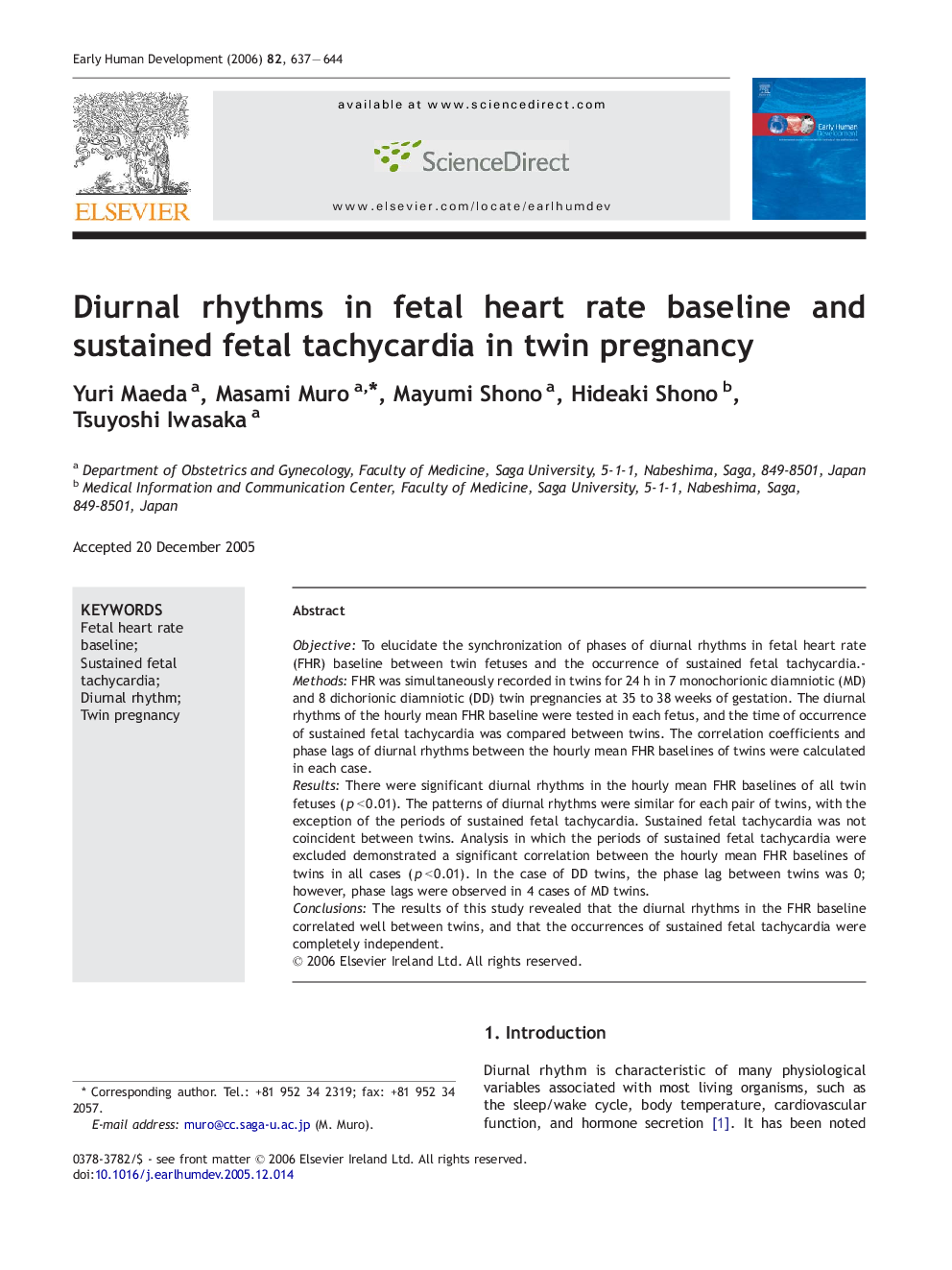| Article ID | Journal | Published Year | Pages | File Type |
|---|---|---|---|---|
| 3918353 | Early Human Development | 2006 | 8 Pages |
ObjectiveTo elucidate the synchronization of phases of diurnal rhythms in fetal heart rate (FHR) baseline between twin fetuses and the occurrence of sustained fetal tachycardia.MethodsFHR was simultaneously recorded in twins for 24 h in 7 monochorionic diamniotic (MD) and 8 dichorionic diamniotic (DD) twin pregnancies at 35 to 38 weeks of gestation. The diurnal rhythms of the hourly mean FHR baseline were tested in each fetus, and the time of occurrence of sustained fetal tachycardia was compared between twins. The correlation coefficients and phase lags of diurnal rhythms between the hourly mean FHR baselines of twins were calculated in each case.ResultsThere were significant diurnal rhythms in the hourly mean FHR baselines of all twin fetuses (p < 0.01). The patterns of diurnal rhythms were similar for each pair of twins, with the exception of the periods of sustained fetal tachycardia. Sustained fetal tachycardia was not coincident between twins. Analysis in which the periods of sustained fetal tachycardia were excluded demonstrated a significant correlation between the hourly mean FHR baselines of twins in all cases (p < 0.01). In the case of DD twins, the phase lag between twins was 0; however, phase lags were observed in 4 cases of MD twins.ConclusionsThe results of this study revealed that the diurnal rhythms in the FHR baseline correlated well between twins, and that the occurrences of sustained fetal tachycardia were completely independent.
